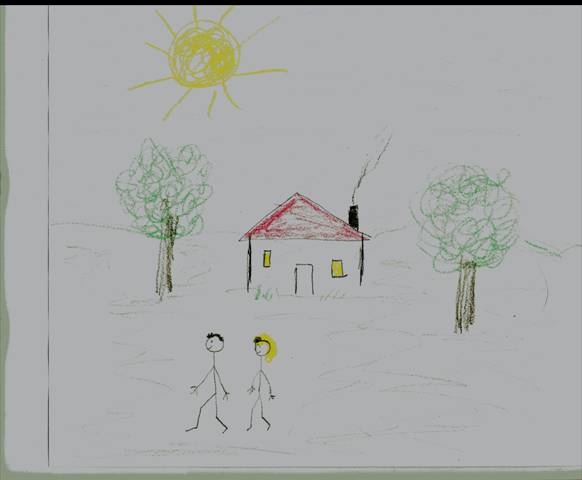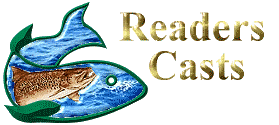LET'S TALK PERCEPTION
Fly anglers carry on many debates about various aspects of the sport, and these debates are part of the history of the sport. Some are legendary, like the dry fly vs. wet fly debate between adherents of the philosophy of Halford and the followers of Skues. Another enduring debate centers on presentation vs. imitation, and incorporated within this debate is the importance of color. Like any good meddler, I would like to toss out a few ideas that certainly will stir the emotions of some of my readers.
Personally I believe that 98% of the time presentation trumps imitation; or more precisely, presentation trumps precise imitation 98% of the time. If the fish are eating something that is best imitated by a size 18 fly I don't believe that you will be real successful getting them to eat a size 12, no matter how well it's presented. However, all things being equal – size and general shape – good presentation will result in more fish hooked by a person using a 'generic pattern' than a pattern tied specifically to imitate the fly that's being eaten if its fished by an angler with poor presentation skills.
During my years of fly fishing and fly tying I have participated in many debates about how and what fish see. The late JC and I spent several years photographing real and artificial flies using a slant tank. [See "Flies Only" in the archives of FAOL] All of this was an attempt to get a better idea of what living insects, especially mayflies, looked like from a fish's point of view. We postulated that if we could see them like the fish do then we could tie better imitations. Without going into all the various 'flaws' in this method, suffice it to say that, while it gave us an entirely new slant [no pun intended] to our understanding of how things look from underwater, I don't believe that it really improved our imitations.
What really intrigued me, and continues to do so to this day, is the question of color and why fish eat some of the strange things that they do, including many of our artificial imitations. One of the things that we discovered using the slant tank is that artificial flies only remotely resemble living insects. If you read the series of articles the late JC wrote you can draw your own conclusions. Since we know that fish do eat artificial imitations that look nothing like living food forms, except in the most generic way, the question of why that should be is intriguing. Using a rather simply analogy I think I can explain it.

Take a look at this drawing. It's probably like one that you have or have had hanging on your refrigerator, a rather simple and crude drawing made by your child or grandchild. When you look at the drawing you understand that nothing looks like the real thing, but you know, without being told, that the green lollypops are trees, the square shape with the triangle on top is a house, and the sticks with balloons and smiley faces on top are people. Why do you know what those things are since they don't really resemble the actual objects? Artists and people that study such things will tell you that we don't really see things as they really are; we see them as recognizable shapes. Our brain processes so much information every second that it can't spend time concentrating on everything that comes streaming in so it assigns shapes to objects that we see every day.
That is why, when we encounter an object that's deformed we stop and look at it. A tree that is twisted and contorted by the wind will cause us to stop and look at it, while all the "normal" looking trees that are growing nearby will not get a second look. The reason that the 'abnormal' tree gets our attention is because it does not fit our brains image of a tree.
If you are interested in testing this out take a pencil and paper and go outside and draw a tree. Then take some paint, watercolor, oils, even crayons and finish the drawing of your tree. Now look at it and see how closely it really resembles the actual tree. Unless you are an artist I will wager that your drawing doesn't look anything like the real tree. This will be especially true when you look at the colors you used when you colored the various parts of the tree. We think that the leaves on a tree in the summer are green, but if you color the leaves on your tree with a simple green color it will not look like the live tree outside your door. The trunk of the tree may appear to be simply brown or gray, but if you color it that way it will not look like the trunk of the living tree. However, if you were to show the picture you made of the tree to someone else, unless you are a very bad artist, they will know instantly that it is a representation of a tree. Once again, our brains receive so much information that we can't stop and look intently at everything that we see so we look at things without really 'seeing' them. Summer trees have brownish or gray trunks and the leaves are green, dirty is brown, water is blue, and the sun is yellow, but when you draw them and color them that way they look just like the picture that hangs on your refrigerator – representative of the shapes but hardly an exact representation of the actual objects.
In addition to shape and overall color our brains expect the various objects to perform in a certain way. Trees don't walk or run across the landscape, and if we see trees moving in that manner we likely are looking for someplace to hide.
My point is this, just like you and me, when a fish is selecting food items it looks for two things – shape and behavior. If it has the right shape and behaves in an acceptable way it must be edible. If it has the right shape but does not behave in an acceptable way it will be avoided no matter how convincing the shape and color may be. Like the twisted tree or the tree that appears to be walking across the landscape, objects that don't match the image of something edible or that move in an unnatural way are most likely to be rejected or even become a source of fear.
For fly fishers I think the conclusions are clear. The closer your imitation is to the general shape of something that the fish are eating, and the more that it behaves like that kind of food, the more likely you are to get a positive response. I really think that, 98% of the time, it's that simple.
Next time we will discuss "my" ideas about the importance of color.
